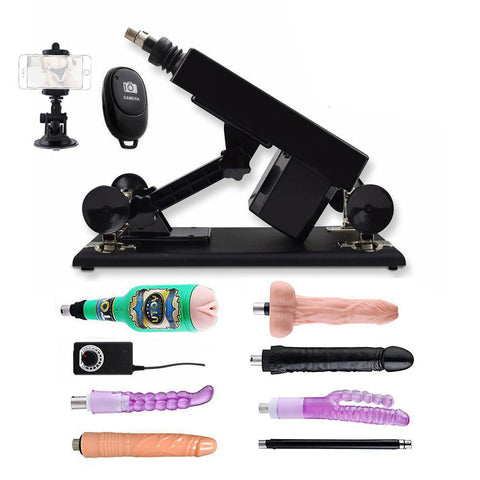Sex machine for men
The American Sexual Health Association (ASHA) recognizes February as National Condom Month. Condom awareness and education has always been important, but this is especially timely as condom use appears to have declined during the COVID-19 pandemic. In this article, I've compiled 10 facts and figures about condoms that are worth knowing.
1). When used properly, condoms are 98 percent effective at preventing pregnancy. However, due to human error, perfect use is often impossible in the real world. When we consider typical use -- what happens in reality -- the effectiveness drops to 82 percent. This means that in practice, 18 out of 100 women who use condoms regularly will become pregnant within a year.
In addition to condoms, you can also learn about our sex machine, which can improve the quality of your sex life.
2). If you're surprised by a typical 82 percent usage rate, you're not alone. Studies show that most people overestimate how effective condoms are at preventing pregnancy, which is why we need education efforts like National Condom Month.
3). One of the biggest reasons condoms aren't as effective as people think is that many of us don't always use them correctly or consistently. Studies of college students, for example, found that as many as 38 percent reported that they only put on condoms once they had begun sex, and as many as 14 percent reported that they took them off before intercourse ended. To learn more about common condom use mistakes, check out this infographic. For tips on proper condom use, check the CDC's web page.
4). Another reason for inefficient condom use is that, in addition to incorrect use, people sometimes use condoms that don't fit. Many people don't realize that condoms are not a "one size fits all" tool. Studies have found that ill-fitting condoms lead to a greater risk of breakage and that people with penises give up using condoms altogether. Remember, condoms come in different sizes and thicknesses, so shop around for the right one for you (or your partner).
5). Buying a well-fitting condom and learning how to use it properly can reduce the risk of errors; However, keep in mind that even when used perfectly, condoms are not 100% effective. If you or your partner are concerned about unwanted pregnancy, consider using multiple birth control methods together, such as combining condoms with birth control pills or using other hormonal birth control pills. While doing so, you can also take advantage of the benefits of condoms to prevent STDS.
6). While condoms are often lamented for making sex less fun, some research suggests they may not take all the fun out of sex. It found that, on average, there was no difference between condom users and non-condom users in the amount of pleasure or likelihood of orgasm they experienced during their most recent sexual encounter. That said, if you find that condoms really do reduce your feelings, you might consider trying a different type of condom or putting a drop of lubricant inside before putting on the condom.
7). Condoms are no longer used in most sexual intercourse. In a national survey in the United States, participants were asked to report their past use of condoms during vaginal and anal sex in 10 instances. Condom use during vaginal intercourse was 25 percent for men, 22 percent for women, 26 percent for men and 13 percent for women. Keep in mind that these are total rates and vary among different groups. For example, rates are higher among adolescents and unmarried adults than among older adults and married people.
8). Condom use has declined in recent years. Among teens, for example, the number who reported using a condom during recent sexual intercourse dropped from 59 percent in 2013 to 54 percent in 2017. Condom use also declined among adult men who have sex with men over the same period, but the decline was steeper for this group. What caused the decline? Several factors may be at work, including increased use of long-term reversible contraceptives, an increase in HIV prevention drugs such as PrEP, and changes in overall activity patterns. To learn more about the factors that may be contributing to the decline in condom use, check out this article.
9). In the past, animal intestines were the most common material used to make condoms. Some condoms are still made of this material (such as Natural AMB); However, these condoms largely fell out of favor because they cost more to produce than latex. Moreover, while they are effective at preventing pregnancy, the animal's cell membranes are too porous to be an effective barrier to most sexually transmitted infections. Learn more about the history of condoms in this video.
10). Some people don't realize this, but in addition to the traditional condom on the penis (colloquially known as the "male condom"), there's a built-in condom that fits inside the vagina.








